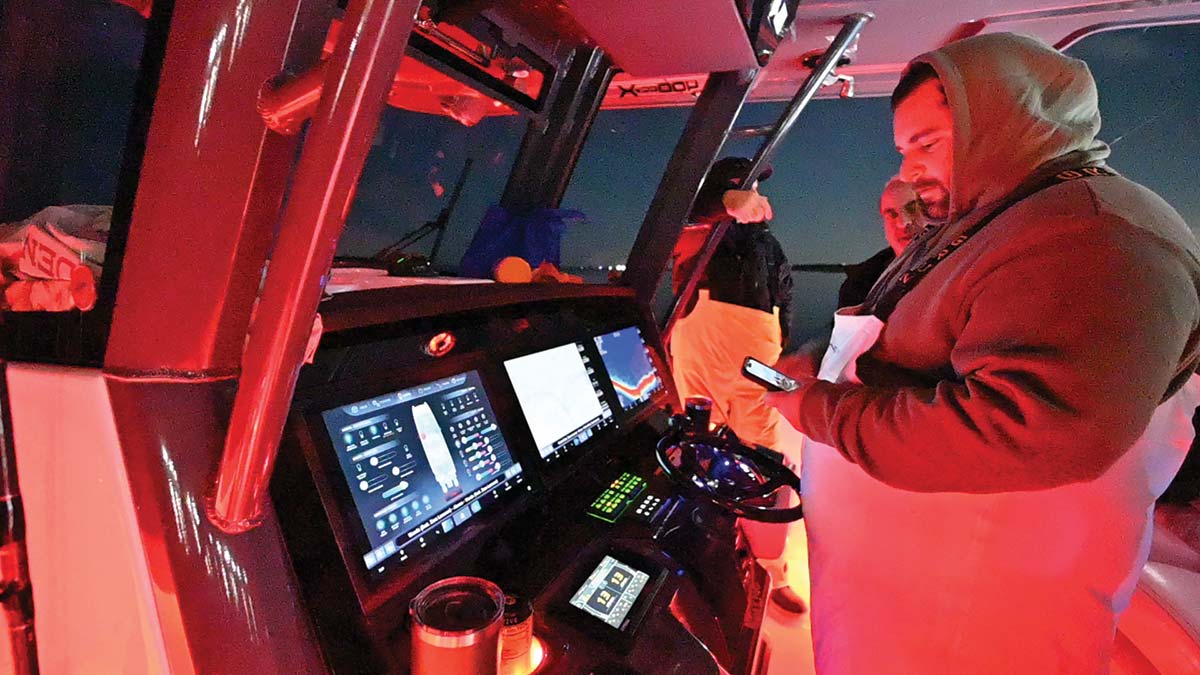
Analyzing the lithium battery concept for coastal boating and fishing.
These days, lithium-based batteries are a part of practically every aspect of our lives, ranging from Apple or Android tablets and cellphones, to cordless power tools and electric vehicles. But is a lithium 12-volt battery right for your boat, either as a dedicated cranking or house power cell? The answer to this question and many more will be covered in this month’s feature, so let’s get right into it.
Not all lithium-based batteries are created equal, and most are a blend of different materials. We’ve all probably seen Tesla car batteries experience “thermal runaways” watching the evening news, while hearing horror stories of cellphones, electric bikes, hover boards and laptop computers suddenly catching fire. Often, these problems are a function of improper use or charging, but sometimes not.
Certain lithium blend chemistries have a higher threshold to excessive heat, charging abuse and resulting failure than others. The chemistry chosen by manufacturers for creating their lithium batteries is typically a function of cost, performance, cycle capacity and thermal stability.
According to the engineering techs at Brunswick’s Navico group, there are a number of different lithium battery chemistry types: Lithium Iron Phosphate (LiFePO4); Lithium Nickel Manganese Cobalt Oxide (NMC); Lithium Cobalt Oxide (LCO); Lithium Manganese Oxide (LMO); and Lithium Nickel Cobalt Aluminum Oxide (NCA). Unlike lithium cobalt-based battery chemistries, LiFePO4 batteries generate very little heat. This is due to the fact that LiFePO4 batteries have extremely stable chemistry. LiFePO4 batteries also offer a superior chemical and mechanical structure that does not overheat to unsafe levels. This is because the charged and uncharged states of these batteries are physically similar and highly robust, which enables the ions to remain stable during the oxygen flux that occurs during charge cycles.
Overall, the oxygen and the phosphorus atoms in LiFePO4 batteries are strongly linked by covalent bonding, unlike the weaker cobalt-oxide bond in cobalt-based lithium batteries like LCO, NMC, and NCA. As a result, when a LiFePO4 battery is overcharged or subjected to physical damage, the phosphate-oxide bond remains structurally stable, whereas the bonds in lithium cobalt-based batteries begin breaking down and releasing excessive heat, which eventually leads to thermal runaway.
Since they are inherently safer, LiFePO4 batteries do not require the additional components, and thereby costs, associated with the cooling and heat mitigation equipment that is needed for lithium cobalt-based batteries. LiFePO4 batteries are also incombustible, can withstand harsh conditions and when they are subjected to hazardous events, such as collision or short-circuiting, they won’t explode. LiFePO4 batteries are a safe, non-toxic long-term solution and a worthwhile investment.
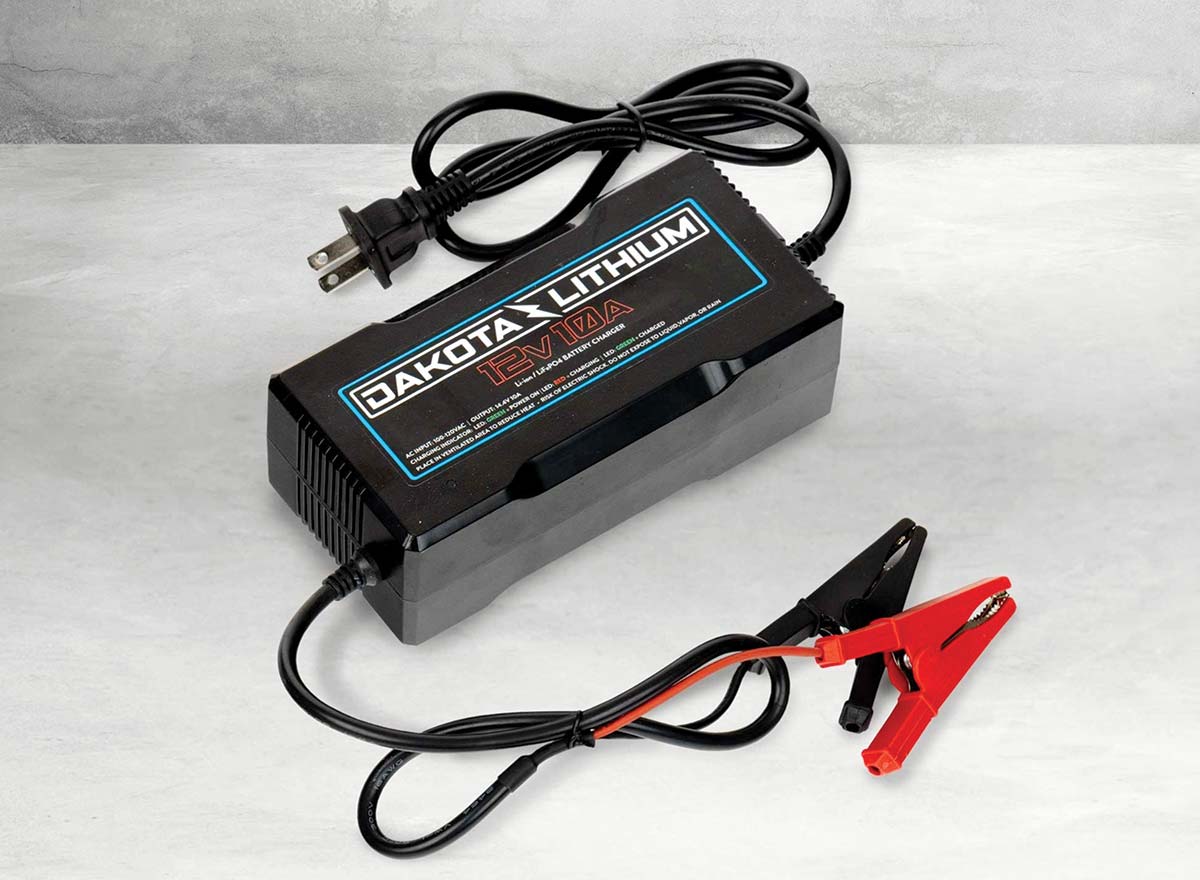
Pros & Cons
I spoke with a few of the engineers and sales managers at Brunswick’s Navico booth at the recent Miami Boat Show in February, who represent both the Mastervolt and RELiON battery brands. According to these industry pros, “Compared to lead-acid and other lithium batteries, lithium iron phosphate batteries offer significant advantages, including improved discharge and charge efficiency, longer life span and the ability to deep cycle while maintaining power. LiFePO4 batteries often come with a higher price tag, but are a much better value over the life of the product. No maintenance and super long life make them a worthwhile investment and a smart long-term solution.”
“Our Mastervolt and RELiON lithium batteries provide up to 10 times longer life than lead-acid batteries and they still provide 80% of rated capacity after 2,000 cycles. RELiON batteries are backed by a solid 10-year warranty. The average lead-acid battery lasts just two years. Lead-acid batteries also need to be maintained, requiring water replacement to avoid structural damage. If they aren’t maintained properly, their life span is shortened even further. Because lithium batteries require no active maintenance, a one-time purchase goes a long way to insure reliability over the long term. Lithium batteries can charge at a much higher current and they charge more efficiently than lead-acid, which means they can be charged faster. Lithium batteries do not need to be charged if they are partially discharged. Unlike lead-acid batteries, which when left in a partial state of charge will sulfate, drastically reducing performance and life.”
When conducting the research on selecting the right LiFePO4 batteries for my boat, the RELiON RB100-HP was the logical choice for my Merc 250 V8 outboard, since it’s the only lithium iron phosphate (LiFePO4) battery that’s officially recommended for all Mercury outboards. When I took a closer look, there were some notable product features that appealed to me.
First, the RELiON RB100-HP (cranking) and RB-100 (house) batteries that I chose weigh in at 29.8 pounds and 26.4 pounds respectively. Compare that to my original Interstate 27M enhanced flooded lead-acid batteries at 50.3 pounds each and you can measure the difference. The RELiON LiFePO4 batteries are practically half of the weight my old flooded lead-acid (FLA) type power cells and provide significantly enhanced performance with a higher amp hour rating, increased cold cranking amps and a more generous reserve capacity, with more consistent voltage across a wider depth of discharge range.
Most lithium batteries offer super-low resistance, allowing much faster charging (up to five times faster than lead-acid batteries), with minimal losses over time. Lead-acid batteries lose power quickly during discharge. LiFePO4 batteries are 96% efficient at converting input energy into stored energy versus approximately 75% for lead acid. Lithium batteries provide 100% of their rated capacity, regardless of the rate of discharge down to 80% depth of discharge levels (20% SOC, or state of charge). Lead-acid batteries typically provide less usable energy with higher rates of discharge. They are usually limited to 50% of the rated capacity to prevent diminished life.
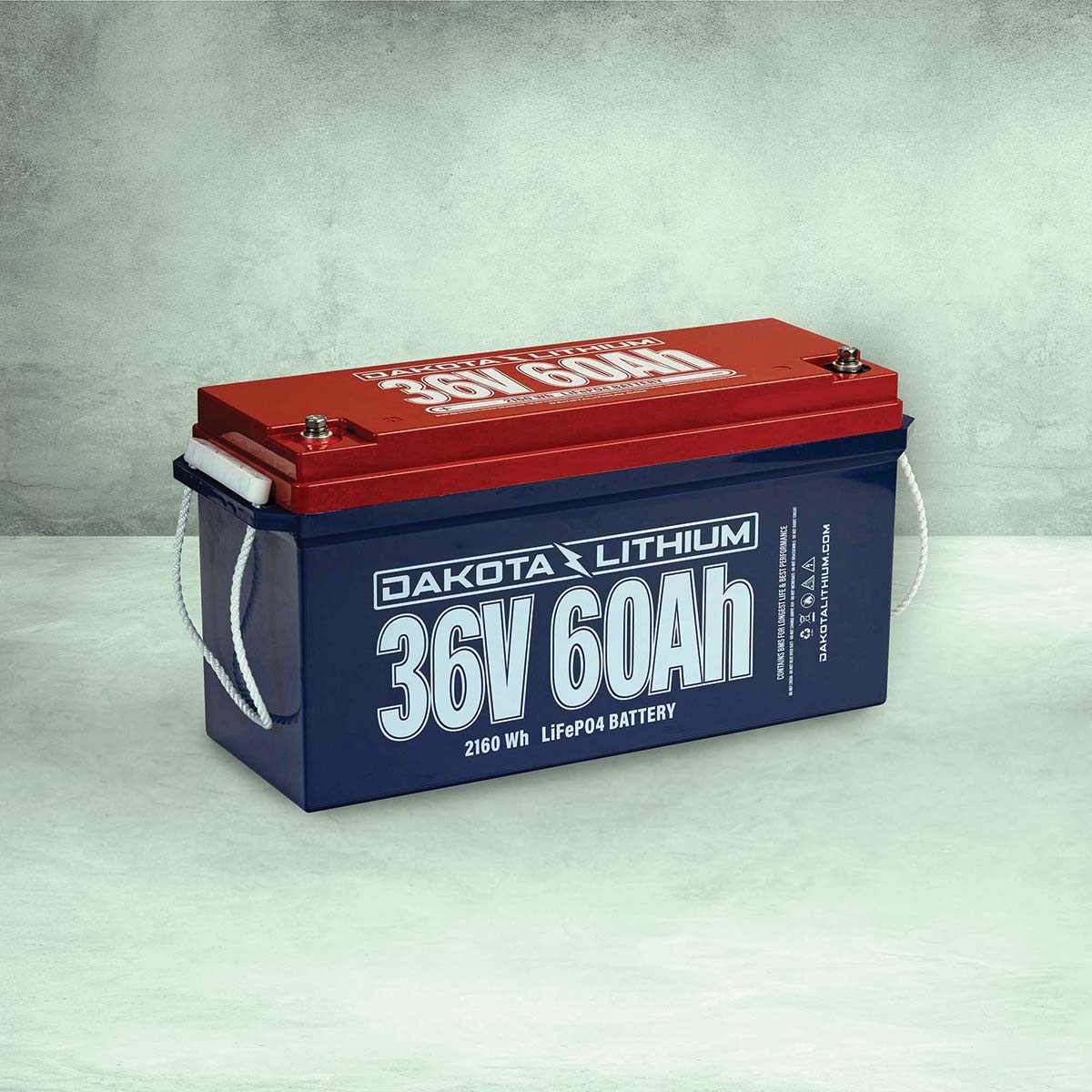
LiFePO4 batteries essentially have a flat voltage curve down to a 20% SOC, offering a somewhat linear power output as the battery discharges. The power output will not dramatically drop like similar sized FLA (flooded lead-acid) batteries. Lithium batteries can cycle up to 3,000 times or more and higher rates of discharge (up to 80%) minimally affect cycle life. Lead-acid batteries typically deliver only 300 to 400 cycles, with higher levels of discharge greatly reducing cycle life.
Lithium iron phosphate batteries have a low self-discharge rate of about 2% to 3% per month. Unlike flooded lead-acid batteries (FLA), lithium batteries do not face permanent capacity loss due to extended self-discharge. And lithium iron phosphate batteries do not contain toxic materials (lead or acid), or emit harmful gasses like lead-acid batteries. The LiFePO4 chemistry is especially tolerant from abuse and relatively safe, with a higher thermal overload safety net compared to other types of lithium batteries.
Most LiFePO4 marine batteries come equipped with a battery management system (BMS) to insure safety and reliable, long-term operation. The BMS on my RELiON RB100 and RB100-HP power cells protects against under-voltage during discharge, over-voltage during charge or regen conditions, over-current and over-temperature during discharge, along with a short-circuit protection that protects the battery cells from damage. In terms of longevity, the replacement warranty on an Interstate 27M flooded lead-acid deep cycle battery is 2 years, while the warranty on my new RELiON batteries is 10 years.
There are a few potential drawbacks of choosing lithium batteries for your boat, first being the higher initial cost. A good general rule using 2023 prices is that a typical 27-series lead-acid power cell should cost roughly $175 to $200. An AGM (absorbent glass mat) battery will put you in the $300 to $400 range, whereas my RELiON 31-series RB100-HP 100 Ah LiFePO4 battery goes for $1,050 to $1,150, depending where you buy it. Multiply this by two or three, and things start to get expensive, but that’s boating.
You also have to consider incompatible chemistries. If you go with one lithium 12-volt battery on your boat, you can’t mix this chemistry with any of the lead-acid types (conventional wet cell, AGM or Gel) in the same electrical system. One reason is that they have different nominal voltages (12.8 volts for LiFePO4 and 12.5 volts for flooded lead acid) and this will produce some very negative Karma.
There is also the potential for heat failures. Although the LiFePO4 chemistry is one of the most stable for maritime use, with thermal protection to over 500 degrees F and guardian angel onboard battery management systems (BMS), it’s still something to think about. On the flip side, lead acid batteries have their drawbacks too, venting harmful gasses in the confined spaces of your bilge or console. And anyone who has ever spilled battery acid on their hands or clothes knows firsthand what a disaster that can be.
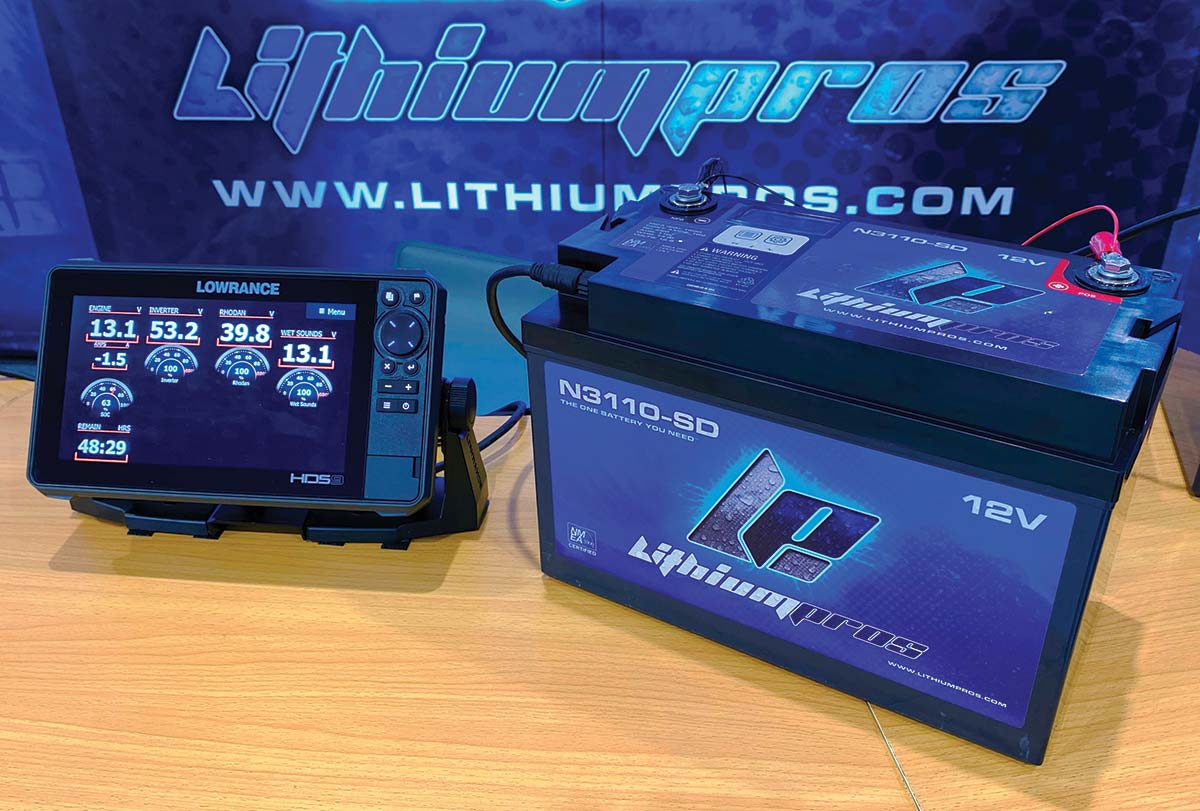
Real Life Experiences
While at the Miami Boat Show in February, I reached out to the engineering team at one of the most popular, premium east coast fishing boat manufacturers in the USA; when I inspected the 36-volt electric trolling motor setup on one of their newly introduced boats, I noticed they had selected a trio of AGM 12-volt batteries for the e-motor’s power supply. “Why not use LiFePO4 batteries,” I inquired, with the response quick and to the point. They were not going to stake their multi-decade sterling reputation on the chance of a customer having a major hiccup with one faulty lithium power cell and the negative press that would bring. They mentioned that until some of their competitors started using them with more frequency, the ABYC and NMMA approved them for use in their certified boat brands and customers started demanding them, they would take an intentionally slow walk down the LiFePO4 path; clearly understood.
I reached out to my local eastern Long Island Mercury dealer a few weeks back and asked him the same questions about using lithium iron phosphate batteries in his rigging and repower business. The response that I got was interesting; he was all in for using LiFePO4 batteries for generator replacements or enhancements, as well as dedicated 24-volt and 36-volt trolling motor setups. In those situations, he is intentionally isolating the lithium battery electrical system from the vessel’s main electrical power grid, which might contain one or more lead-acid power cells. He has rigged them so these separate lithium circuits have their own dedicated chargers and cannot be cross-connected with the existing lead-acid house and starting system circuit.
One of my close business and fishing buddies installed a 24-volt Rhodan GPS lock electric trolling motor on his EdgeWater 175cc and totally loves it. What he doesn’t love is the often cranky nature of his standard flooded lead acid (FLA) battery pack that has to be replaced every other season. He is certainly a candidate for a LiFePO4 upgrade. In my experience over the past two seasons, I have been running a pair of popular name brand AGM batteries, with dedicated starting and house power cells. I typically keep these isolated from one another and started to notice that if I was shark or tuna drifting for more than 6 to 7 hours with my engine off and running my full suite of electronics with a trio of multifunction displays (MFD), sea temp gauge and frequent VHF radio operation, the system voltage would start dropping off, adversely impacting the MFD’s performance (screen flickering), requiring me to periodically restart my Merc 250 V8 and put a charge into the AGMs to rectify the problem. That’s a classic FLA Achilles heel issue, specifically, noticeable voltage degradation when approaching that precipitous 50% depth of discharge level.
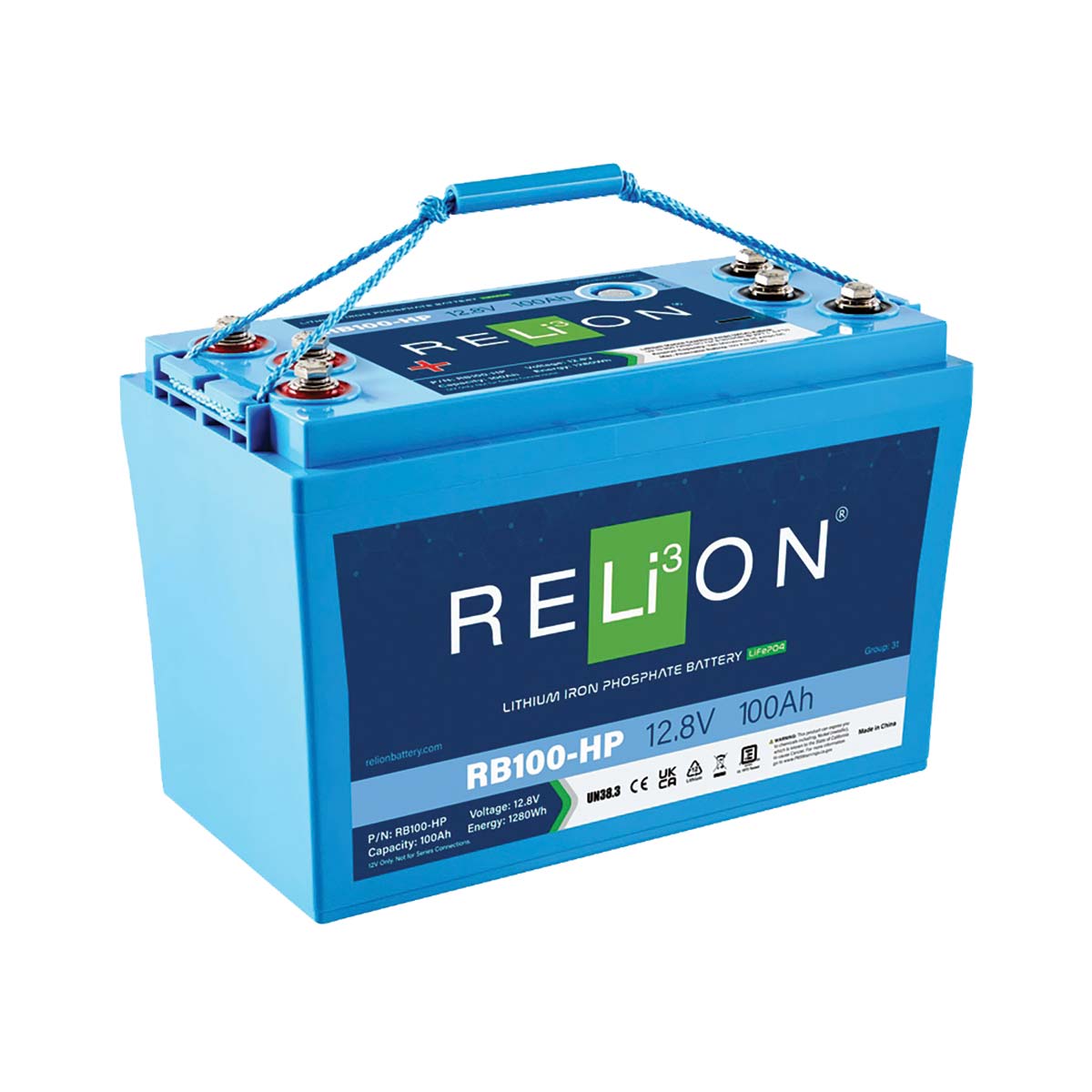
Some battery company and boat/motor engineers that I’ve spoken with mentioned that it was okay to re-energize LiFePO4 (lithium iron phosphate) batteries with a conventional 12-volt battery charger, while others had reservations and recommended using a charger that was dedicated to the quirks and voltage profiles of lithium-ion batteries. As a general rule, if LiFePO4 batteries are not fully discharged, they do not need to be charged after each use. LiFePO4 batteries do not get damaged when left in a partial state of charge (PSOC). Still, you can charge your LiFePO4 12-volt power cells after each use, or when they have been discharged up to 80% of their original capacity (20% SOC).
According to the folks at Dakota Lithium, a Seattle, Washington based lithium battery retailer, “We highly recommend you use a LiFePO4 compatible charger.” They said 12-volt chargers for lead acid batteries may work, but will decrease performance and lifespan of a lithium battery. “To determine your charging speed using a 10-amp battery charger, take the amp hour rating of your battery and divide by 10. For example, a 60-amp hour (Ah) battery would charge in 6 hours. For most applications a charging time of 3 to 10 hours provides the longest lifespan for your lithium battery. But if you have an application where you need rapid charging, Dakota Lithium batteries can be safely charged in up to 1 hour (at a rate of 1C),” they added.
As an example, the folks at Dakota Lithium said you could use a 10-amp charger with a 10 Ah battery for a 1-hour charge time. Charging at a 1-hour rate does reduce the lifespan over time. “In our laboratory testing we found that the longest lifespan for Dakota Lithium batteries was at a charging speed of 0.3C or less (we recommend that the charger amp rating is 1/3 or less of the battery amp hour rating for longest lifespan),” they said, adding “We recommend a charging voltage of 14.4 volts for Dakota Lithium (LiFePO4) batteries to bring them up to full capacity.”
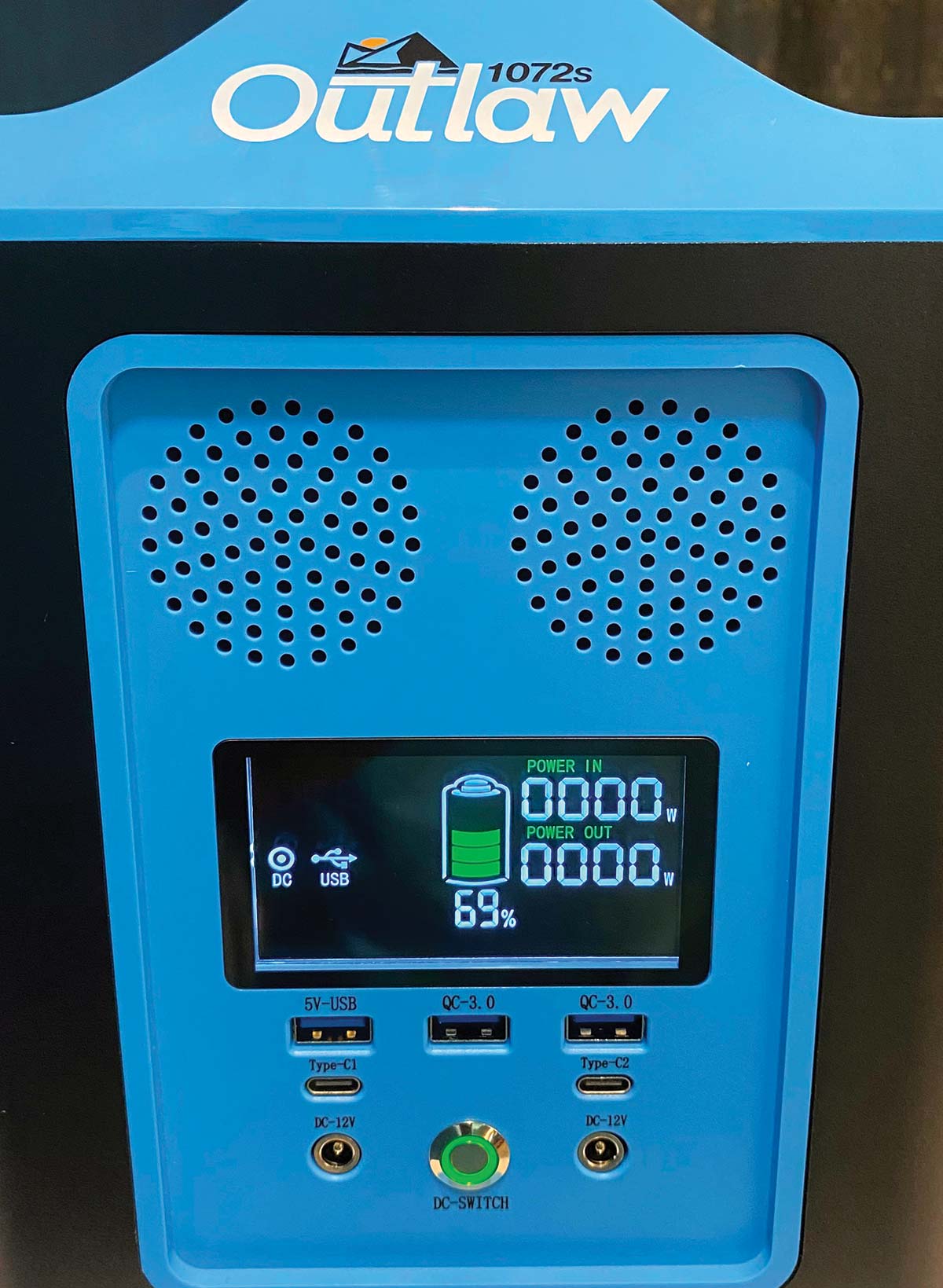
More Charging & Storage
Lithium batteries are generally charger-friendly. Many current battery chargers in today’s marketplace have a lithium charge profile, which is the recommended setting. In most instances, AGM or Gel charge profiles will work with lithium batteries. RELiON does not recommend the use of a flooded charge profile with their batteries. These chargers may reach the overvoltage protection limit and disconnect. It won’t damage the battery, thanks to the BMS system, but will likely result in charger faults. Before using any charger with a lithium battery, it is best to first verify that the charge profile is within the battery’s specifications.
According to RELiON, most lead-acid battery chargers can be used with LiFePO4 batteries as long as they operate within the appropriate voltage guidelines. As an example, the Data sheet for my RB100-HP battery specifies a 5A to 50A maximum continuous charge current (which is temperature sensitive; lower amps are required for temps below 32 degrees F), with a max charger output of 100 amps; a recommended charging voltage of 14.4 to 14.8 volts; a battery management system (BMS) charge voltage cutoff of 15.4 volts and a reconnect voltage of 14.6 volts.
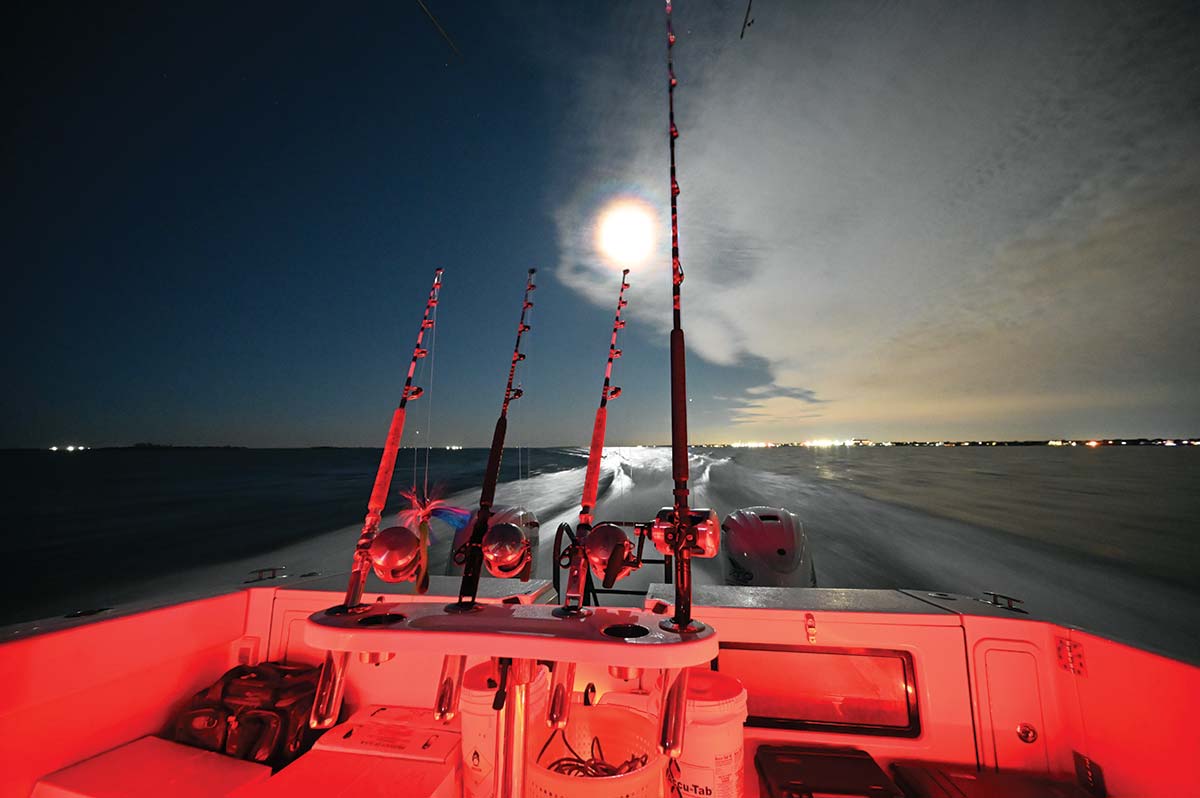
AGM and Gel algorithms typically fall within the LiFePO4 voltage requirements. The voltage for flooded lead acid battery charging algorithms are often higher than LiFePO4 requirements, which will result in the BMS disconnecting the battery at the end of the charge cycle, which may result in an error code on the charger. If this happens, it is generally a good practice to replace the charger with one that has a more friendly lithium profile.
In terms of lithium battery storage, RELiON recommends storing lithium batteries at 50% SOC. One of the benefits of lithium batteries is that they depreciate roughly 2% to 3% of their capacity for every month of storage, which is significantly less power loss compared to FLA battery types. LiFePO4 batteries can typically be stored safely between 23 to 95 degrees F. For storage longer than three months, the recommended temperature range is 32 to 77 degrees F. If batteries are stored for extended periods of time, the batteries should be cycled roughly every six months to bring them back to the 50% SOC benchmark.
One of the most critical bits of information that would help every boater, no matter what type of battery type they have chosen (LiFePO4, FLA, AGM or Gel) for their vessel’s electrical system, is the answer to the question at any given moment, “how much battery capacity is remaining?” To get a scientific answer, I reached out to Kevin Bennett, president of Lithium Pros out of Knoxville, TN. “The battery gauges that most boats have are based on voltage, a specific measure of the current state of voltage for the power cells onboard, which will typically range from 12.4 to 14 volts,” Bennett said, adding “While this is somewhat useful information, it is not a true gauge of the capacity status that is in your 12-volt power cells.”

Bennett said the best measure to ascertain the current capacity of a battery would be to measure its amps. Lithium Pros offers a battery meter that is built into their “N” series LiFePO4 batteries, which features full NMEA connectivity, which acts like a ‘fuel gauge’ that gives real time readings of its amp capacity via your boat’s connected multi-function displays. “This is accomplished by measuring electrons as they either flow in (during charging) or flow out (during discharging) of the battery through a shunt bridge, indicating the remaining capacity either in amps or a percentage of power left in the cell,” Bennett said, adding “Our lithium batteries are unique in that they backed by a 7-year transferrable warranty.”
Taking Kevin’s advice, I will be installing a Mastervolt Battman Pro gauge to measure the true capacity of my two new RELiON LiFePO4 batteries, which incorporates the recommended shunt (bridge) in its set-up kit to measure those pesky electrons as they flow into or flow out of my power cells during use.
Lithium iron phosphate 12-volt batteries are here to stay and in the passing years will become more prevalent in the world of fishing and boating. Is embracing the LiFePO4 wave part of your future? Time will tell.


